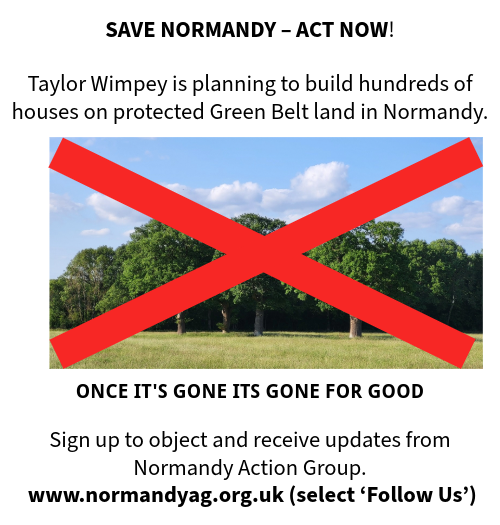Site of Nature Conservation Interest (SNCI), Site of Importance for Nature Conservation (SINC) and Regionally Important Geological Site (RIGS) are designations used by local authorities in England for sites of substantive local nature conservation and geological value. The Department for Environment, Food and Rural Affairs has recommended the generic term 'Local Site', which is divided into 'Local Wildlife Site' and 'Local Geological Site'. There are approximately 35,000 Local Sites
Strategic Housing Market Area Assessment is n essential evidence document defined in the NPPF. Its apparent purpose is to enforce the implementation of “an objective assessment of the market-led housing need and demand” where a local authority is undertaking a Local Plan process. The research activity is carried out by retained consultants and central government guidance requires them to speak to all commercial parties that work in the property market and the local authorities. Part of the evidence is the local authority housing lists. There is also an assessment of ‘affordability’ and general level of house prices in relation to the other participating local authority areas and London. The boundary of the “market area” is open to interpretation and there are a number of documents available that variously define the housing market for Guildford borough, with it stretching from Rushmoor in the west to Reigate & Banstead in the north east and including Woking borough in the north down to Chichester, Hampshire in the south. However, past SHMAA studies have defined the market area as the boroughs of Woking, Guildford and Waverley and named it the South West Surrey SHMAA. A boundary based on local authority areas is permitted under the NPPF and recognised as a practical solution to the problem. However, the NPPF also recognises that such a market area contains population, economic, commuting and employment dynamics and so introduces a “Duty to Co-operate” to force local authorities to have an on-going dialogue and formal process that defines potential areas in each other’s boundaries that might cater for overspill housing development between them.
Strategic Housing Land Availability Assessment is an essential evidence document defined in the NPPF. Its apparent purpose is to enforce the implementation of “an objective assessment of land availability” where a local authority is undertaking a Local Plan process. The NPPF requires a local authority to identify a proven 5-year land supply for its proposed housing development when it submits its draft Local Plan for examination in public by the Planning Inspectorate. The document should contain maps and descriptions of all plots of land the local authority has identified for housing and commercial development. It should identify which pieces of land are available for development in years 1-5, 6-10 and 11-15 of the Local Plan.
Settlement Hirearchy is another document essential to the evidence base of the Local Plan process for Guildford borough. The Local Plan process carried out in 2003 created settlement boundaries drawn around each defined settlement in the borough. A settlement is not necessarily contiguous with a village or parish boundary. In 2003 settlement boundaries were drawn tightly around the developed curtilage of built development in order to maximise Green Belt protection. The NPPF proposes the core concept of “sustainable development” without actually defining what that means as it is in fact an oxymoron. In the Local Plan process each settlement is assessed for what facilities it contains, and what facilities are within 1km of the boundary. These facilities determine if each settlement can operate as a self-sustaining community with shops/doctor surgery/schools/public open space etc within easy walking/cycling distance for residents, has access to methods of public transport and so reduce carbon emissions that result from car-based commuting. These facilities are then scored and the settlements ranked for “sustainability”. The more “sustainable” a community, the more likely it to be targeted for new housing development.
Safeguarded Land is land identified in a Local Authority Local Plan evidence documents, between the Green Belt and an urban area, which has been reserved for development purposes beyond the Plan period. Such sites are intended to be extracted from the green fields surrounding an urban area by drawing a boundary to define land that will meet long term development needs and reduce the pressure to amend Green Belt boundaries (see NPPF Para 85)
NPPF - 9 Protecting Green Belt Land - Para 85
When defining boundaries, local planning authorities should:
- ensure consistency with the Local Plan strategy for meeting identified requirements for sustainable development;
- not include land which it is unnecessary to keep permanently open;
- where necessary, identify in their plans areas of ‘safeguarded land’ between the urban area and the Green Belt, in order to meet longer-term development needs stretching well beyond the plan period;
- make clear that the safeguarded land is not allocated for development at the present time. Planning permission for the permanent development of safeguarded land should only be granted following a Local Plan review which proposes the development;
- satisfy themselves that Green Belt boundaries will not need to be altered at the end of the development plan period; and
- define boundaries clearly, using physical features that are readily recognisable and likely to be permanent.

